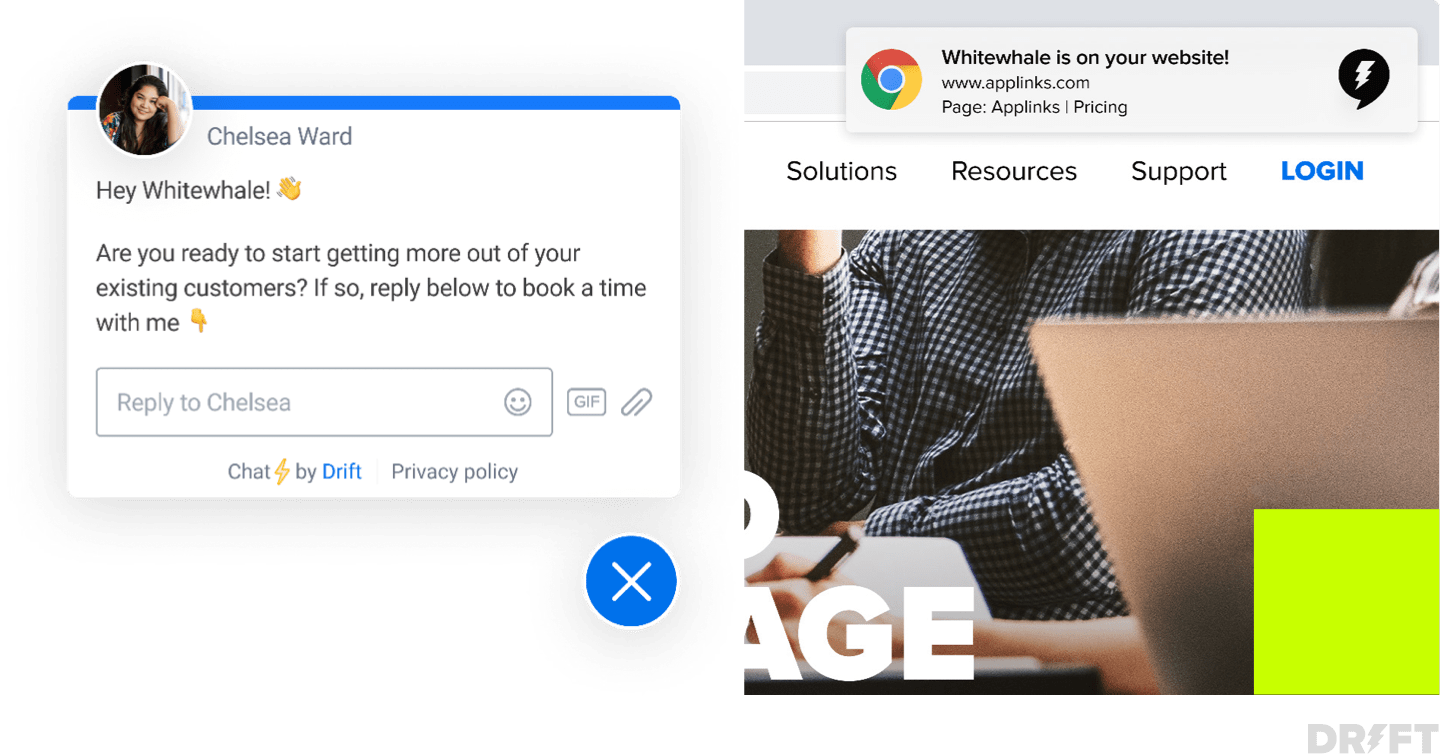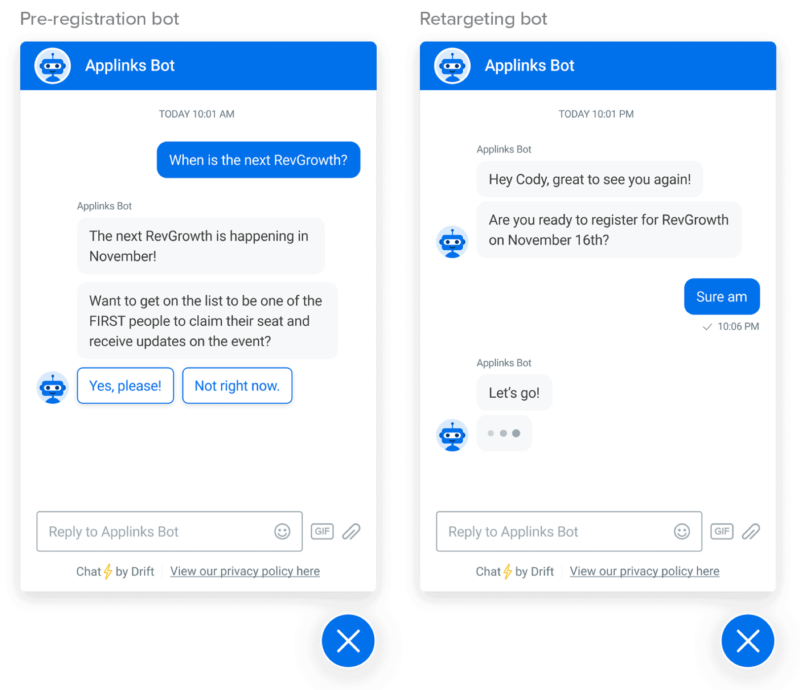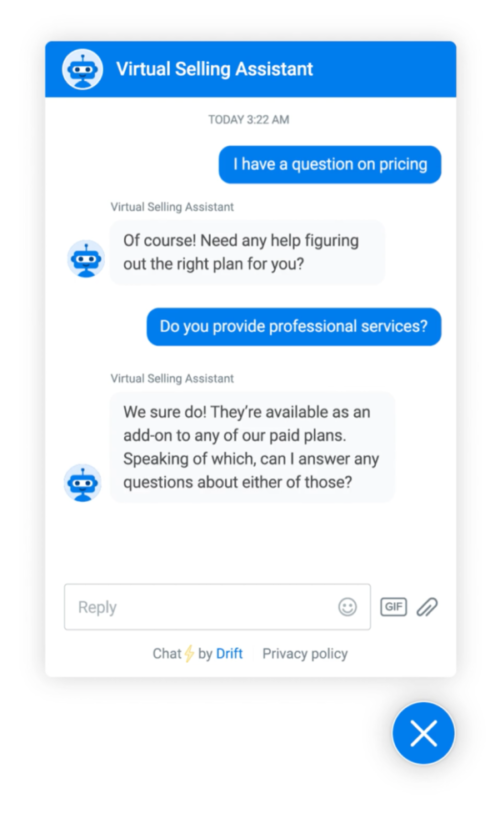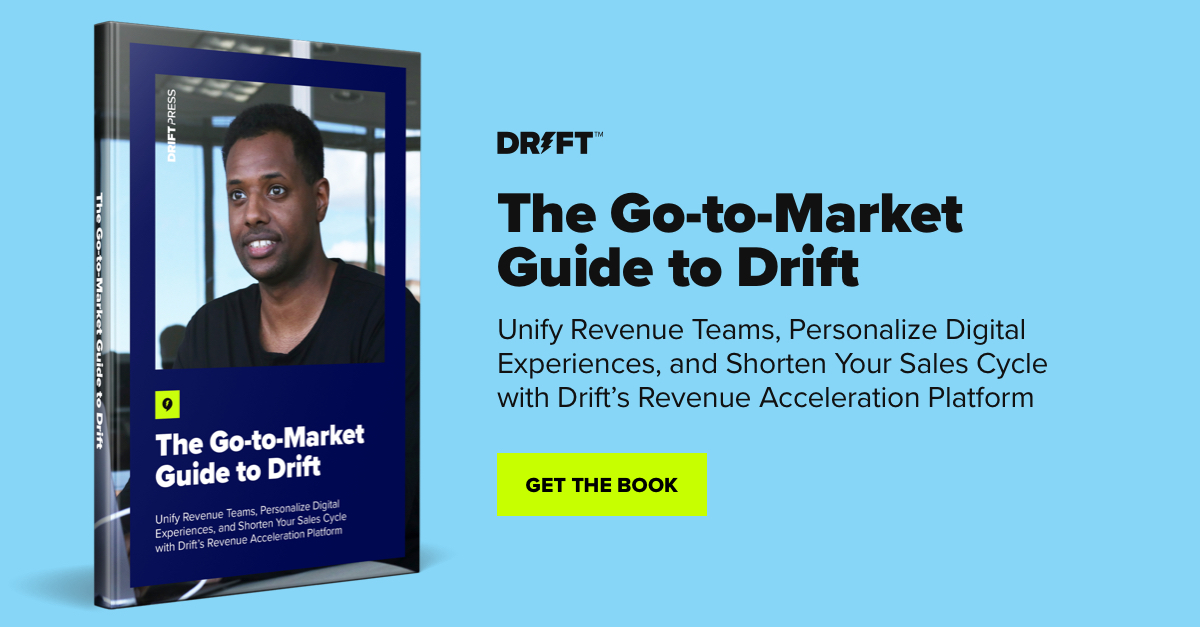One of the questions I receive most often is: “How does Drift use Drift?”
Our mission is to change the way that businesses buy from businesses. Which is why we don’t just build and sell Drift, we also use it.
That means we know all the ins and outs of Drift — what it can do and the best ways to use it to accelerate revenue.
I recently spoke with the experts on Drift’s instance of Drift: Tim Ozmina, former Senior Conversion Marketing Manager, and Monique Lemieux, Senior Marketing Operations Manager. Together, we want to spotlight three use cases that we actually use at Drift.
And no, this isn’t a sales pitch. This is a masterclass on how you too can make the most of Drift ⚡️
Looking for more operations best practices? Make sure you’re subscribed to Operations with Sean Lane. New episodes drop every other Friday.
Use Case 1: Greeting Your Target Accounts
With Drift, you can roll out the red carpet for your target accounts as soon as they land on your website. This isn’t just calling your prospect by name. As Tim points out, you can get “very nitty-gritty in the details” of how you engage with your target accounts.
All of this starts with identifying your ideal customer profile (ICP) and building a list of target accounts in Salesforce. Then, you can sync that list into Drift.
So, when a target account visits your site, you can deliver personalized messages and accelerate the buying cycle by foregoing any qualifying questions.

But, as Monique puts it, “It’s never going to be the end-all be-all of all of the accounts that could benefit from your product or your solution.” Drift integrates with customer relationship management software (CRMs) like Salesforce and marketing automation platforms (MAPs) like Marketo so that you can identify your most successful clients and then target any lookalike companies. This feedback loop helps you continually update your ICP.
We at Drift also use these integrations to create leads in our systems which record and report on the conversations that prospects have had on our website. This way, we’re able to pick up on information like what page the prospect landed on or how they interacted with the chatbot. That information is then used to develop future marketing and sales strategies.
None of this would work, though, without proper alignment between your sales and marketing teams. Otherwise, the conversation might drag on, and you’re likely to lose out on opportunities. So the first step is to make sure that your teams are on the same page about your ICP and target accounts.
Use Case 2: Registering Prospects for an Event or Webinar
Our website is completely free of forms. So how do we register people for our events?
It’s as easy as chatting with our bot.
For example, if you want to register for an event, all you have to do is ask Drift’s chatbot to do so. You’ll then be asked to provide your email address. And then you’re all set.

More on that process here 👇
The conversation doesn’t end there, though.
Once you’ve captured your prospect’s email, you can keep the ball rolling by letting them know about other events you’re hosting that they might be interested in. And because you already have all of their information, you can simplify the registration process so that all they have to do is say “yes” in a reply email.
Similarly, you can use the data recorded in your CRM to enhance the registration experience. If you know that a person works for one of your target accounts, you can get them more involved, like prompting them to register for a VIP event.
You can also use your event as a lead-in to personalize and accelerate the sales conversation.
For example, if a person comes to your website from a social media post, you can customize your bot to open with, “Hey, we saw you were on this post about RevGrowth. Do you want to learn more about it?” And because you can set up detailed playbooks in Drift, it’s easy for your team to lead your prospect from a social media post to a deep-dive into your company and product.
“At the end of the day, you’re driving people back to your website, and Drift can actually be that glue that touches all of your different channels, all of your different campaigns that you’re running and continues that conversation at your storefront, which is your website.” –
By putting Drift at the center of all your marketing campaigns, you can make sure that you’re always engaging with your prospects and that your conversations won’t stagnate anytime soon.
Use Case 3: Drift’s Conversational Ai
While your standard rule-based chatbot is good at holding conversations, it can’t answer any questions that you haven’t anticipated. So how can you program your chatbot to have the kind of flexibility you want?
Conversations aren’t always linear. Drift’s Conversational AI uses AI chatbots to hold conversations that don’t adhere to prewritten playbooks. This means that a site visitor can ask a specific question or explain their specific pain points, and the chatbot won’t be at a loss to respond.

“I think of that as a big benefit of AI, which is that you don’t have to make assumptions about how people are going to engage and how people are going to ask questions or what type of questions they’re going to ask.” –
With the AI chatbots, the conversation flows more naturally. Site visitors aren’t confined to selecting options or answering yes/no questions. Instead, the AI chatbot can ask generally, “What can I help you with?” or “What are you looking for?”
If you’re wary about handing the reins over to AI, it’s important to keep in mind that AI chatbots are always learning. Rule-based chatbots can only adapt if a person programs it to respond to new questions and answers. This means that it’s much harder to scale. On the other hand, AI chatbots do the same thing automatically.
Conversations rarely follow a clean set of rules. So it only makes sense to take advantage of smart, flexible AI to make your chatbots as responsive as possible.
Final Thought
Of course, there are many more ways that you can use Drift. These three use cases are some concrete examples of what has worked for us, but you might find other use cases that are a better fit for your team or company.
We made Drift so that we could put our buyers at the center of everything we do. And that means we’re dedicated to engaging with our prospects and customers in a personal way — whether it’s through chatbots, email, or more. Hopefully, these insights will inspire you and help you create a conversational experience that will delight all your buyers.









